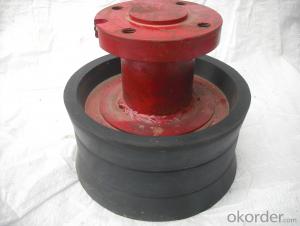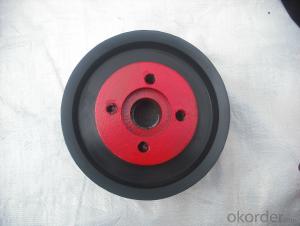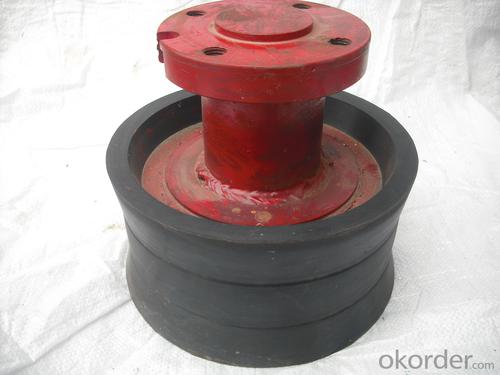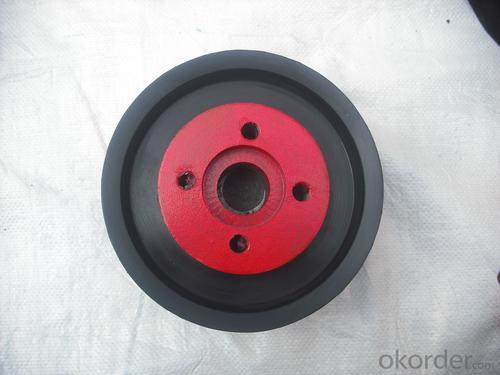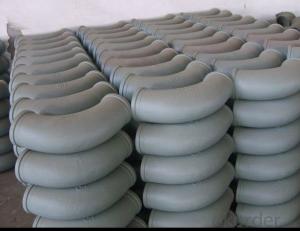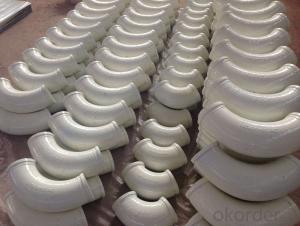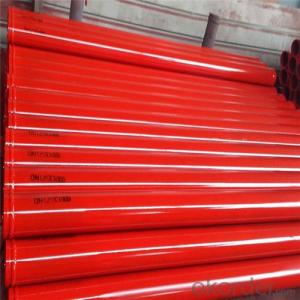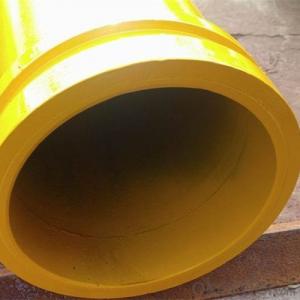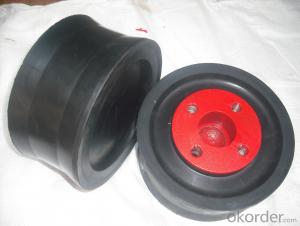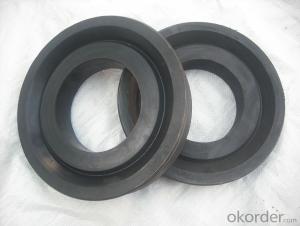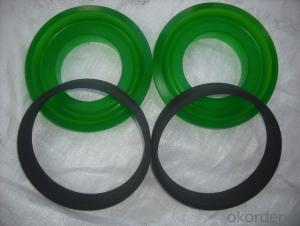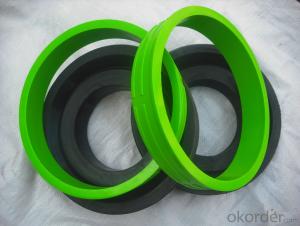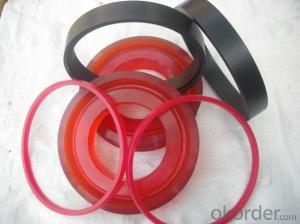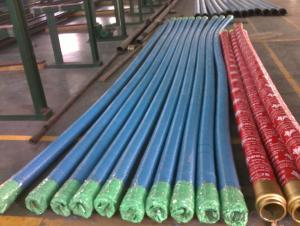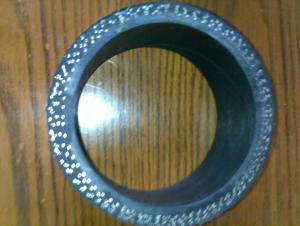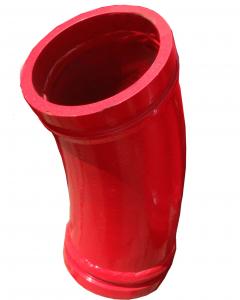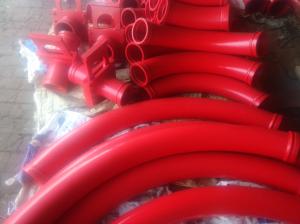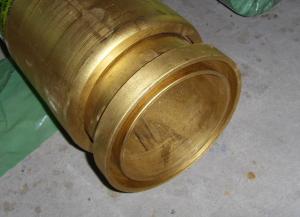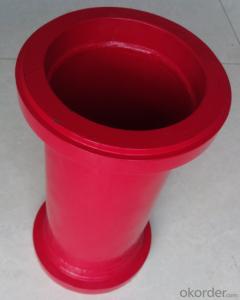ZOOMLION RUBBER PISTON DN180 WITH HIGH QUALITY
- Loading Port:
- Tianjin
- Payment Terms:
- TT OR LC
- Min Order Qty:
- 5 set
- Supply Capability:
- 500 set/month
OKorder Service Pledge
OKorder Financial Service
You Might Also Like
ZOOMLION RUBBER PISTON DN180 WITH HIGH QUALITY
Schwing/ Sany/PM/Zoomlion concrete pump rubber piston
name | Concrete pump piston |
size | DN200 for Schwing DN230 for Schwing DN200 for PM entirety piston DN230 for PM entirety piston DN180 for Zoomlion piston DN200 for Zoomlion piston DN220 for Zoomlion piston DN230 for Zoomlion piston DN180 for Sany piston DN195 for Sany piston DN200 for Sany piston DN230 for Sany piston DN260 for Sany piston DN280 for Sany piston Other sizes and types upon request |
Material | PUR Polyurethane,natural rubber |
Applacation | Used in concrete pump truck,concrete pump,Hydrulic ram system in Construction work equipment
|
Serving brands of mounted truck concrete pump and concrete pump | Sany ,PM, Zoomlion,Schwing,CIFA and so on |
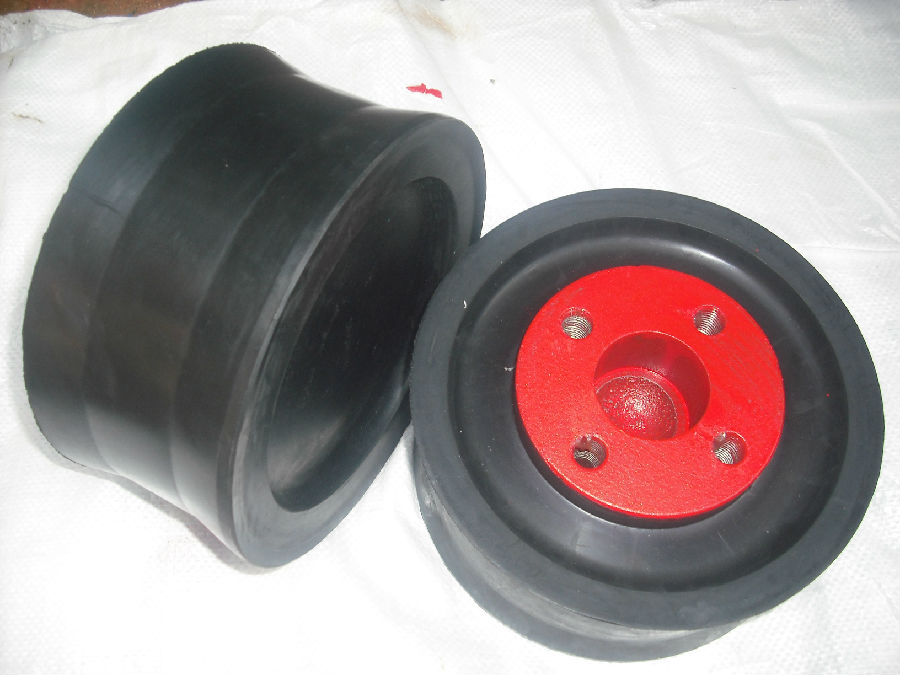
- Q: How can one ensure proper functioning of concrete pump spare parts after installation?
- To ensure the proper functioning of concrete pump spare parts after installation, there are a few key steps that can be followed: 1. Quality Assurance: It is crucial to purchase spare parts from reputable manufacturers or suppliers. Ensure that the spare parts are of high quality, made from durable materials, and comply with industry standards. This will significantly reduce the risk of malfunctioning parts. 2. Proper Installation: It is essential to follow the manufacturer's guidelines and recommendations for the installation of concrete pump spare parts. Each component should be installed correctly, with the right torque and alignment. It is advisable to seek professional assistance if needed to ensure proper installation. 3. Regular Maintenance: Regular maintenance is crucial for the proper functioning of concrete pump spare parts. Create a maintenance schedule and follow it diligently. This includes inspecting and cleaning the spare parts, checking for any signs of wear or damage, and lubricating moving parts as required. 4. Timely Replacement: Over time, concrete pump spare parts may wear out or become damaged due to continuous use. It is essential to monitor the condition of the spare parts and replace them when necessary. Regularly inspecting the parts and promptly replacing any worn-out or damaged components will help maintain the proper functioning of the pump. 5. Training and Education: Ensuring that the operators and maintenance personnel are properly trained and educated is crucial for the proper functioning of concrete pump spare parts. They should be familiar with the equipment, its spare parts, and the correct procedures for installation and maintenance. Regular training sessions can help improve their knowledge and skills, resulting in better maintenance and performance of the spare parts. By following these steps, one can ensure the proper functioning of concrete pump spare parts after installation, enhancing the overall efficiency and longevity of the equipment.
- Q: What are the specifications for concrete delivery pumps?
- The staff shall not climb or ride on the pipeline, and should be absolutely avoided when working at high altitude
- Q: Are there any specific guidelines for the transportation of concrete pump spare parts?
- Concrete pump spare parts have specific guidelines for transportation to ensure their safe arrival and immediate usability. Consider the following key guidelines: 1. Packaging: Adequate packaging is necessary to prevent damage during transportation. This may involve using sturdy boxes, crates, or pallets to protect parts from impacts and vibrations. 2. Labeling: Clearly label each package with its contents, including the specific part name and number. This facilitates easy identification and prevents confusion during transportation. 3. Handling: Handle spare parts with care to avoid mishandling or dropping, which could cause damage. It is recommended to use proper lifting equipment and follow safe handling practices to prevent excessive stress or force. 4. Securing: Properly secure packages to prevent movement or shifting during transportation. This can be achieved by using strapping, shrink-wrapping, or other suitable methods to keep packages in place. 5. Temperature control: If spare parts are temperature-sensitive, ensure proper temperature control during transportation. Extreme temperature variations can damage certain parts, so it's important to protect them accordingly. 6. Transportation mode: Select suitable transportation modes based on the size and weight of spare parts. For larger parts, flatbed trucks or specialized vehicles may be necessary to accommodate their size and weight. 7. Insurance: It's advisable to have proper insurance coverage for the transportation of concrete pump spare parts. This provides financial protection in case of unforeseen incidents or damages during transit. By adhering to these guidelines, concrete pump spare parts can be transported smoothly and safely, guaranteeing their intact delivery and immediate usability.
- Q: What is the function of a concrete pump hopper filter?
- The function of a concrete pump hopper filter is to prevent large debris and foreign objects from entering the pump system, ensuring smooth and uninterrupted flow of concrete and protecting the pump from potential damage.
- Q: How to calculate the power of concrete pump motor?
- Of course, the motor power is large, the transmission speed is fast
- Q: What are the signs of a damaged concrete pump agitator motor?
- There are several signs that can indicate a damaged concrete pump agitator motor. 1. Unusual noises: If you hear excessive grinding, rattling, or squeaking noises coming from the agitator motor, it could be a sign of damage. These noises may indicate worn-out bearings or other internal components that need attention. 2. Inconsistent operation: A damaged agitator motor may result in irregular or inconsistent mixing of the concrete. If you notice that the concrete is not being mixed properly or if the agitation speed is inconsistent, it could be a sign that the motor is damaged. 3. Overheating: If the agitator motor becomes excessively hot during operation, it may indicate a problem. Overheating can be caused by various issues, such as a faulty motor or insufficient lubrication. In such cases, it is important to address the issue promptly to prevent further damage and potential breakdown. 4. Vibrations: Excessive vibrations during operation can be a sign of a damaged motor. Vibrations may occur due to imbalanced or misaligned components within the motor, which can result in reduced efficiency and increased wear and tear. 5. Electrical issues: If the motor is experiencing electrical problems, such as tripping circuit breakers or blowing fuses, it could indicate a damaged motor. Faulty wiring, short circuits, or damaged electrical components can lead to these issues and should be addressed by a professional. 6. Reduced performance: A damaged agitator motor may result in reduced performance or decreased efficiency. If you notice that the agitator is not working as effectively as it used to or if the concrete is not being mixed thoroughly, it could be a sign of motor damage. In any case, if you suspect that the concrete pump agitator motor is damaged, it is recommended to consult a professional technician or service provider familiar with concrete pump machinery. They can diagnose the issue accurately and provide appropriate solutions to repair or replace the damaged motor.
- Q: Are there any specific guidelines for the storage and handling of concrete pump spare parts during transportation?
- Concrete pump spare parts must be stored and handled according to specific guidelines during transportation to ensure safety and efficiency, as well as minimize the risk of damage or loss. To begin, it is crucial to package and protect the spare parts properly. This entails using suitable materials like cardboard boxes, bubble wrap, or foam padding to prevent any physical harm during transit. The spare parts must be securely packed to prevent any movement or shifting during transportation. Furthermore, it is advisable to clearly label the packages with the contents and any specific handling instructions. This will aid transport personnel in correctly handling the spare parts and avoiding mishandling or confusion. Moreover, it is essential to select a trustworthy and experienced transportation service provider who specializes in delicate and sensitive items such as concrete pump spare parts. They should possess the necessary equipment, such as pallet jacks or forklifts, for safe handling and movement of the spare parts. During transportation, it is vital to ensure that the spare parts are loaded and secured properly in the transport vehicle. This may involve using straps, ropes, or other securing devices to prevent any movement or shifting of the packages. Regarding temperature control, it is important to consider the specific requirements of the spare parts. Some parts may be sensitive to extreme temperatures and necessitate special handling or climate-controlled transportation. Consulting with the manufacturer or supplier of the spare parts is crucial to determine any specific temperature or climate requirements. In conclusion, adhering to these guidelines will guarantee the secure and safe transportation of concrete pump spare parts, reducing the risk of damage or loss and ensuring their readiness for use upon arrival at their destination.
- Q: How can a faulty agitator motor affect the concrete mixing process?
- A faulty agitator motor can significantly affect the concrete mixing process in several ways. Firstly, the agitator motor is responsible for the rotation of the mixing drum, which ensures that all the ingredients in the concrete mix are thoroughly blended. If the motor is faulty or not functioning properly, it may result in inadequate mixing. This can lead to inconsistencies in the concrete mixture, with some portions being over-mixed and others being under-mixed. As a result, the concrete may not achieve the desired strength, durability, or uniformity. Secondly, a faulty motor can cause irregular or insufficient agitation, leading to the formation of lumps or clumps in the concrete mix. These lumps can negatively impact the quality of the final product, as they may create weak spots or air pockets within the concrete. Moreover, the presence of lumps can compromise the overall workability of the mix, making it more challenging to handle and place, which can affect the efficiency and productivity of the construction project. Furthermore, a faulty agitator motor may result in uneven distribution of the materials within the mixing drum. This can cause variations in the proportions of aggregates, cement, water, and additives, which are crucial for achieving the desired concrete properties. Inconsistent material distribution can lead to concrete with inadequate compressive strength, reduced durability, and increased susceptibility to cracking or other forms of distress. Lastly, a malfunctioning agitator motor can result in increased mixing time, as it may take longer to achieve the desired level of homogeneity in the concrete mix. This can affect the overall productivity of the concrete mixing process, as it may lead to delays in construction schedules and increased costs. In summary, a faulty agitator motor can have a significant impact on the concrete mixing process. It can result in inadequate mixing, the formation of lumps, inconsistent material distribution, and increased mixing time. All these factors can contribute to a decrease in the quality of the final concrete product, compromising its strength, durability, workability, and overall performance.
- Q: What are the indications of a weak or dead remote control battery?
- Some indications of a weak or dead remote control battery include unresponsive buttons, delayed responses, or the inability to control the device from a distance.
- Q: How can one determine the correct weight and balance requirements for concrete pump spare parts?
- To determine the correct weight and balance requirements for concrete pump spare parts, one should refer to the manufacturer's specifications and guidelines. These documents usually provide information on the recommended weight limits and distribution for each spare part. Additionally, consulting with industry professionals or engineers with expertise in concrete pump systems can help ensure accurate weight and balance calculations.
Send your message to us
ZOOMLION RUBBER PISTON DN180 WITH HIGH QUALITY
- Loading Port:
- Tianjin
- Payment Terms:
- TT OR LC
- Min Order Qty:
- 5 set
- Supply Capability:
- 500 set/month
OKorder Service Pledge
OKorder Financial Service
Similar products
Hot products
Hot Searches
Related keywords
